The fix for hot schools in Fort Collins may come with a more than $200 million price tag
A new price tag has been added to the long-running discussion about whether schools without air conditioning should get it as average temperatures in and around Fort Collins and the length of the school year increase.
And it’s steep, ranging from a low of $166.6 million to as much as $268.4 million, according to an outside contractor hired by the Poudre School District Board of Education to provide a building-by-building assessment.
The assessment presented to the district's governing board on Tuesday night came with price tags for individual schools ranging from a low estimate of $533,900 for the Fullana Learning Center facility for early childhood education to a high of $11,088,495 for Lesher Middle School.
The all-in cost to add mechanical cooling systems to all 36 district schools lacking them totaled $166.6 million to nearly $225 million in June 2023 dollars, officials with McKinstry, a national construction and energy services company, told the school board during a regularly scheduled work session and business meeting.
Thirty of the schools without air conditioning would be best served by the installation of heat pumps, operating on a single condenser water loop, with each pump either absorbing or rejecting heat from the condenser water, said John Runnels, McKinstry’s lead engineer on the assessment. The most cost-effective approach for the other six schools is to upgrade and replace equipment to improve the effectiveness of existing cooling systems, according to McKinstry’s recommendations.
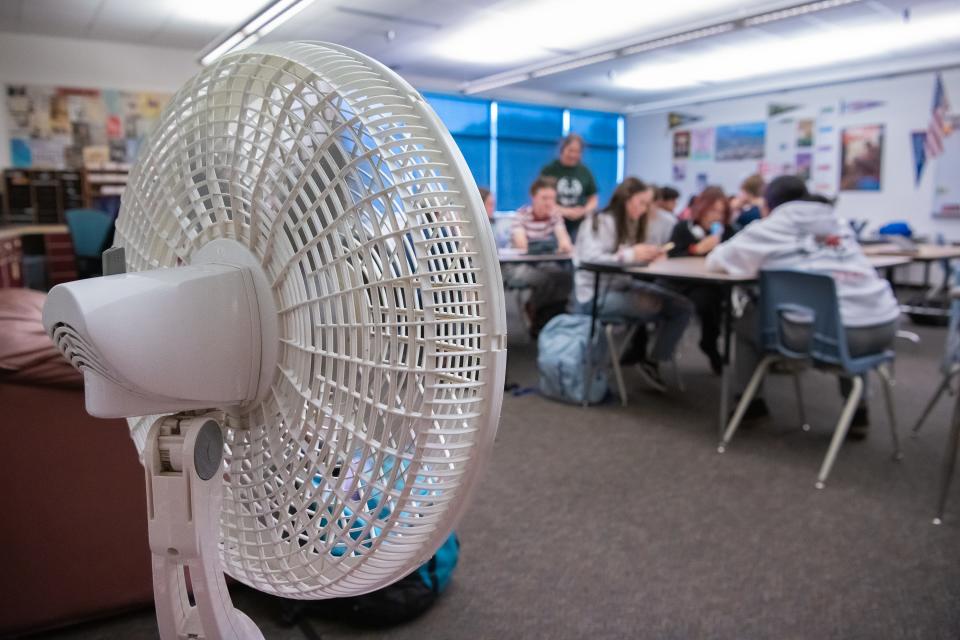
The process of adding mechanical cooling to all 36 schools would take at least seven years to complete, with a best-case estimate of completing five schools per year, Runnels said. That would put the total cost at an estimated $268.4 million by completion, assuming an annual 3% rate of inflation.
PSD’s annual budget for capital improvements at all 50 of its non-charter schools (the district’s charter schools are responsible for financing their own capital improvements under terms of their charters) and other district facilities is just $800,000, Superintendent Brian Kingsley said.
So, adding effective cooling systems to every school without them would require taxpayer support, through approval of a bond measure that might also require a mill-levy override.
“I need to be very explicit and clear that there are no quick or inexpensive districtwide fixes here, and if we move forward with a project of this magnitude, we definitely would need voter support in the future,” Kingsley said.
District says cooling schools could expand opportunities
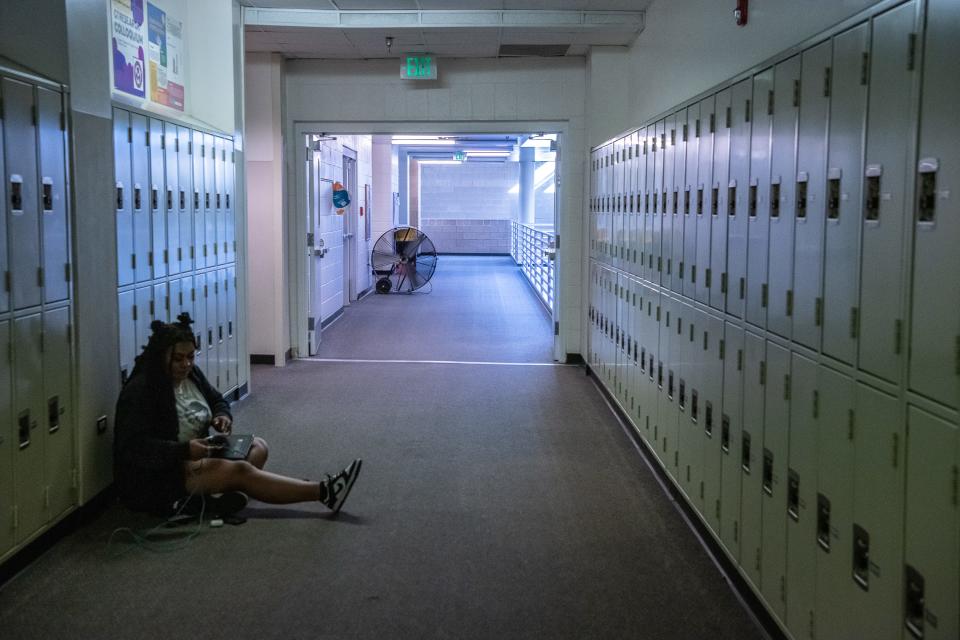
PSD's superintendent went on to note, however, that effective cooling systems in district buildings would create new opportunities, including expanded summer programs and possibly even year-round school for those who would benefit from it.
“I’m not saying all 54 schools are going to become a year-round school in the future, but there are different ways of leveraging our portfolio of facilities and assets all 12 months of the year,” Kingsley said.
A 2015 study performed by Horsetooth Engineering that McKinstry was asked to update and verify had given a total cost of $50.9 million to add air conditioning to all PSD schools without it and $21 million more to fix broken or ineffective systems at three others — Fullana, Rocky Mountain High School and Wellington Middle School.
At the time, the school board dismissed the idea of putting a bond measure on the ballot, suggesting the costs were far too high for something that was really only needed for a few days to a few weeks each year, said former school board member Cathy Kipp, now a state legislator representing House District 52, which covers much of south and east Fort Collins.
“For years, the answer was you don’t build a parking lot for the school play, right?” Kipp said. “You don’t spend millions and millions of dollars for something that you only need for a few days or weeks each year. But it’s becoming clear that this problem isn’t going away, and it’s getting bigger.”
A similar building-by-building assessment in the Thompson School District in 2021 estimated the total cost of adding air conditioning to its 15 schools without it at nearly $105 million, according to figures provided by Todd Piccone, the district’s chief operations officer. As PSD’s Board of Education had decided previously, the cost was considered too high to take to voters.
All Weld RE-4 schools are air conditioned, per spokesperson Katie Smith.
Voters in the Denver Public School District approved a bond measure in 2020 that included $130 million to install air conditioning in 24 of its schools 55 schools without it, 9News reported. Installation had only been completed at 11 of those schools when classes began Aug. 21. Students at 14 of the schools without air conditioning were released two hours early the following day because of extreme heat in classrooms.
School heat issues linger into late September this year
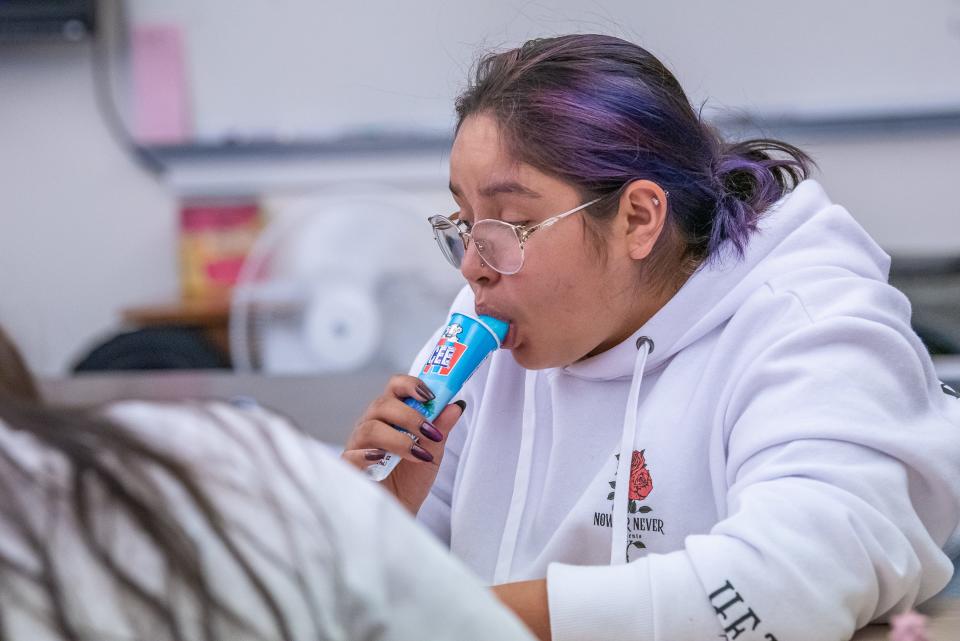
PSD has dismissed students because of excessive heat in buildings without air conditioning a handful of times over the past decade, most recently Sept. 7-8, 2022, when outside temperatures were in the high 90s. Equity concerns led the district to dismiss students early at all schools that day, even those with air conditioning, officials said at the time.
Excessive heat in schools has become an increasing concern in PSD schools in recent years. The number of school days impacted continues to grow as well, according to teachers, staff, parents and students.
Although the district has installed air-exchange systems that can draw in cool air overnight to cool buildings at the start of the day, federal requirements to turn over the air inside the buildings throughout the day and security regulations that prevent the opening of most windows or doors when students are present, can quickly negate the effects when outside temperatures exceed 85 to 90 degrees.
Classrooms on the second floor of Fort Collins High School, which has a mechanical cooling system that has been broken for more than a year and awaiting a key part before repairs can begin, topped 90 degrees several times in the first two weeks of school this year, principal Jennifer Roth said Tuesday, confirming multiple reports from parents and staff. The inside temperature in one of those classrooms Tuesday afternoon was 80 degrees, according to a thermostat on the wall, just one degree below the official high temperature for the day in Fort Collins, as reported by the Colorado State University weather station. And that was with a large-capacity fan blowing in the main hallway outside the room and four smaller fans inside the classroom running at high speed.
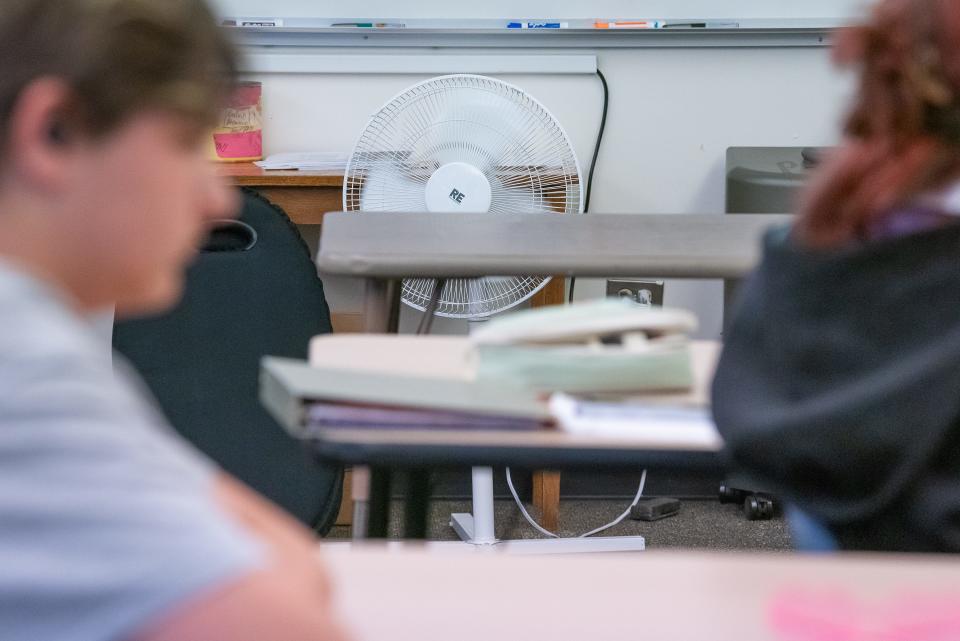
Teachers and staff at several other schools in the district without air conditioning reported temperatures in the high 80s to low 90s by mid-afternoon in their classrooms, including some that had portable air conditioning units running, during the first two weeks of school this year.
“We need to figure out a good path forward, because it’s not good for our kids to be learning in these extremely hot environments, and it’s not good for our teachers and the rest of our staff, either,” Kipp said.
Complicating matters is that those schools, along with their teachers and students, are being held to the same district, state and national standards as those in newer schools in their own district and across the state, said John Robinson, a former teacher and president of the Poudre Education Association.
“Our kids are suffering; there’s no question about it,” said Angelika Schroeder, who represents the 2nd Congressional District, including Fort Collins, on the state Board of Education. “… It’s becoming an equity issue.”
The state board, she noted, doesn’t have the authority to require air conditioning in schools. And funding isn’t likely to come from the Colorado General Assembly, which already ranks near the bottom of the 50 United States in per-pupil spending on K-12 education.
PSD voters last approved bond measures and mill-levy overrides in 2016, when they approved a $375 million bond to pay for the construction of three new schools — Timnath and Wellington middle-high schools and Bamford Elementary — and an $8 million mill levy override, and in 2019, when they approved an $18 million mill levy override to provide pay increases for teachers and support staff and hire additional mental health professionals.
The air-conditioning assessment was one of four facility assessments McKinstry will provide PSD under terms of a $2.3 million contract approved Feb. 7 by the school board. A solar-energy feasibility and cost assessment was presented to the board in May, a facilities condition assessment will be presented in November and a retro-commissioning report will be shared in December, said Lauren Bridgers, McKinstry’s project director for the PSD contract.
Although the other reports are not yet complete, she told the board preliminary estimates from the facilities condition assessment to repair and replace “equipment expected to fail within the next 20 years” districtwide is about $555 million.
Some of that equipment, she noted, would be upgraded or replaced if the air-conditioning systems were added to facilities that don’t currently have them.
PSD considering heat pumps instead of traditional air conditioning
The opportunity to use some existing equipment in many of the schools, along with cost and environmental concerns, led to the recommendation of providing the air conditioning in most PSD schools without it through heat pumps that can provide both heating and cooling, Runnels said. Water pipes now used for heating can be modified to carry both hot and cold water, as needed, throughout the buildings.
PSD’s Timnath Middle-High School, which opened last fall, uses heat pumps for what staff and students have said are effective heating and cooling systems.
Previous efforts to cool PSD schools through tempered air and other evaporative cooling systems have not worked, Runnels said. Heat pumps, utilizing outside air chilled to cool water that is then piped through schools, are the most cost-efficient and effective option for PSD.
“Most of these buildings have a central heating system already, so we’re trying to find ways that we can reuse some of the existing infrastructure without having to completely scrape everything and do it new,” he said.
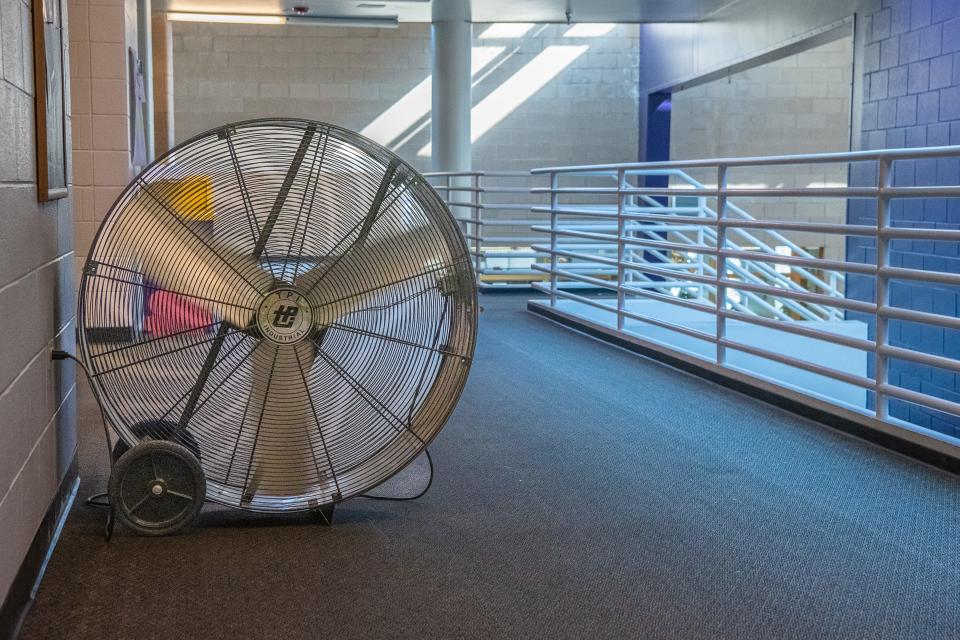
Another benefit, he said, is the ability to change the power plant in the future without having to scrap the entire system. For example, if the district opts for geothermal heating and cooling, the heat pump system can still be used, drawing hot and cold air from an underground source to spread throughout the school, as needed.
Twenty-seven of the district’s schools without air conditioning or other effective cooling systems will need an electrical service upgrade to power the heat pump systems, Runnels said.
The cost of those electrical upgrades, along with the costs of mechanical, structural, plumbing and architectural improvements, are included in the building-by-building estimates. That includes replacement, as necessary, of existing boilers, ductwork, water piping and a full overhaul of system controls.
Estimates, he cautioned, do not include unforeseen complications, such as the abatement of asbestos if it is discovered in walls, ceilings, floors or insulation during the installation process.
Utility costs at each of the schools are likely to increase, as well.
“But you’re paying for student comfort for a good education environment, right?” Runnels said.
Reporter Kelly Lyell covers education, breaking news, some sports and other topics of interest for the Coloradoan. Contact him at kellylyell@coloradoan.com, twitter.com/KellyLyell or facebook.com/KellyLyell.news.
This article originally appeared on Fort Collins Coloradoan: Fix for hot Fort Collins schools could involve $200 million price tag

